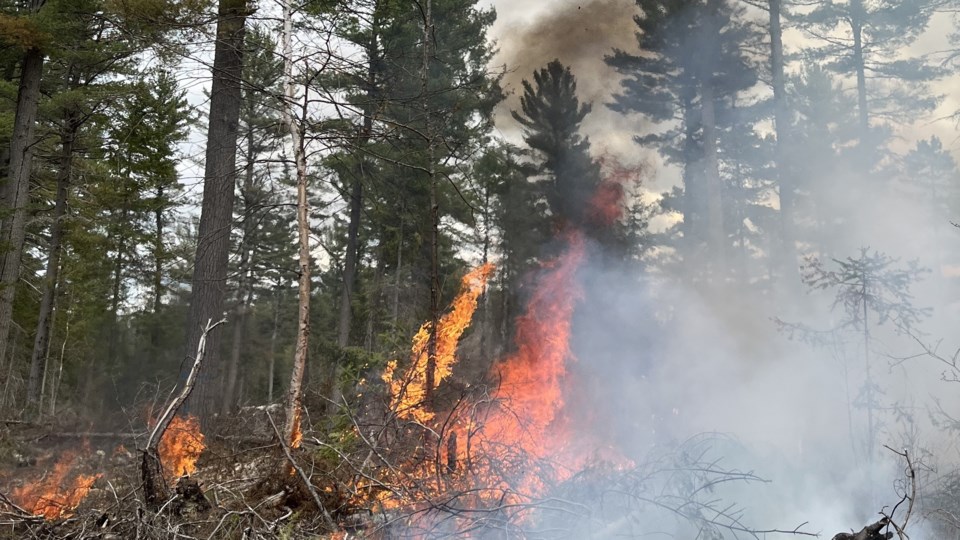THUNDER BAY — While widespread rainfall over the last weekend and earlier in the week led to a low wildland fire hazard across Northwestern Ontario, a gradual drying trend has begun to build the fire hazard moving into the weekend.
As of Friday afternoon, Alison Bezubiak, the region’s fire information officer for Aviation, Forest Fire and Emergency Services, said the hazard is low to moderate across the region’s southern border and increases from high to extreme across the north.
In particular, areas of extreme hazard were noted in the Far North near Red Lake and Sioux Lookout, according to a media release issued later in the evening.
Around 7:30 p.m., a four-hectare fire, Red Lake 36, was confirmed roughly 3.5 kilometres north of Poplar Hill First Nation and reported as uncontrolled with FireRanger crews, two waterbombers and a birddog actioning it into the evening.
Red Lake 36 is one of 22 total active fires in the Northwest region — of which four are uncontrolled, five are controlled and the remainder are being observed.
Following several days of minimal fire behaviour last weekend, Bezubiak said Nipigon 5 was also changed to a status of being held, meaning that sufficient suppression action has been taken so that fire is not likely to spread beyond its current perimeters.
This fire currently poses no concern for the community of Webequie First Nation, she said, and there’s been no observed growth on the fire since June 9.
“To the efforts of our ground and aerial firefighting crews, due to the current condition of the fire, it’s not currently receiving suppression action. So, the status of Nipigon 5 has now been changed to being observed,” said Bezubiak.
Fire operations personnel will conduct regular observations to ensure fire behaviour remains quiet and there are no forecasted threats to the community, she added.
The Kenora district office has also advised that all evacuation and restricted access orders that had been in place around wildland fires Kenora 20 and Kenora 32 were revoked, effective June 13.
All travel and use of roads and lakes in this area, as well as all use and occupation of Crown Land that was previously identified, are now available, stated Bezubiak in a follow-up email.
Wildland fire suppression activities are ongoing on Kenora 20 and Kenora 32, she added, but public safety related to these fires is no longer a concern.
However, the storm system, which moved across the region late last weekend, Bezubiak said, brought heavy lightning to the southern half of the region.
As a result, she said they are closely monitoring for potential holdover fires — also known as zombie fires — caused by lightning strikes as weather conditions improve.
“Holdover lightning fires can remain undetected and may not become visible until conditions dry out, winds increase and temperatures rise. Sometimes surfacing more than a week after the initial strike,” said Bezubiak.
Looking ahead, Bezubiak, some rain is also expected again in the coming days.
“We’ll have a better idea of the impact of that rain once it materializes,” said Bezubiak.
